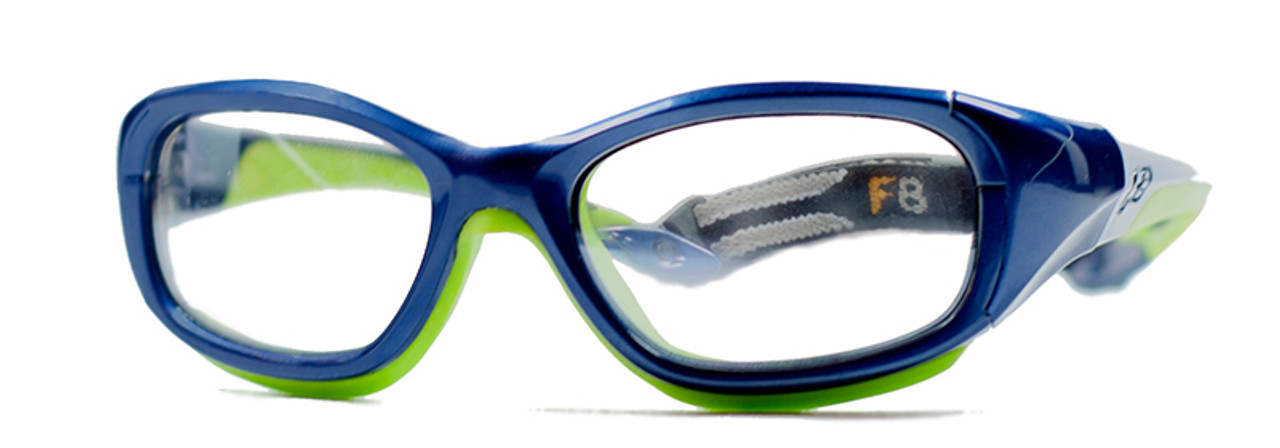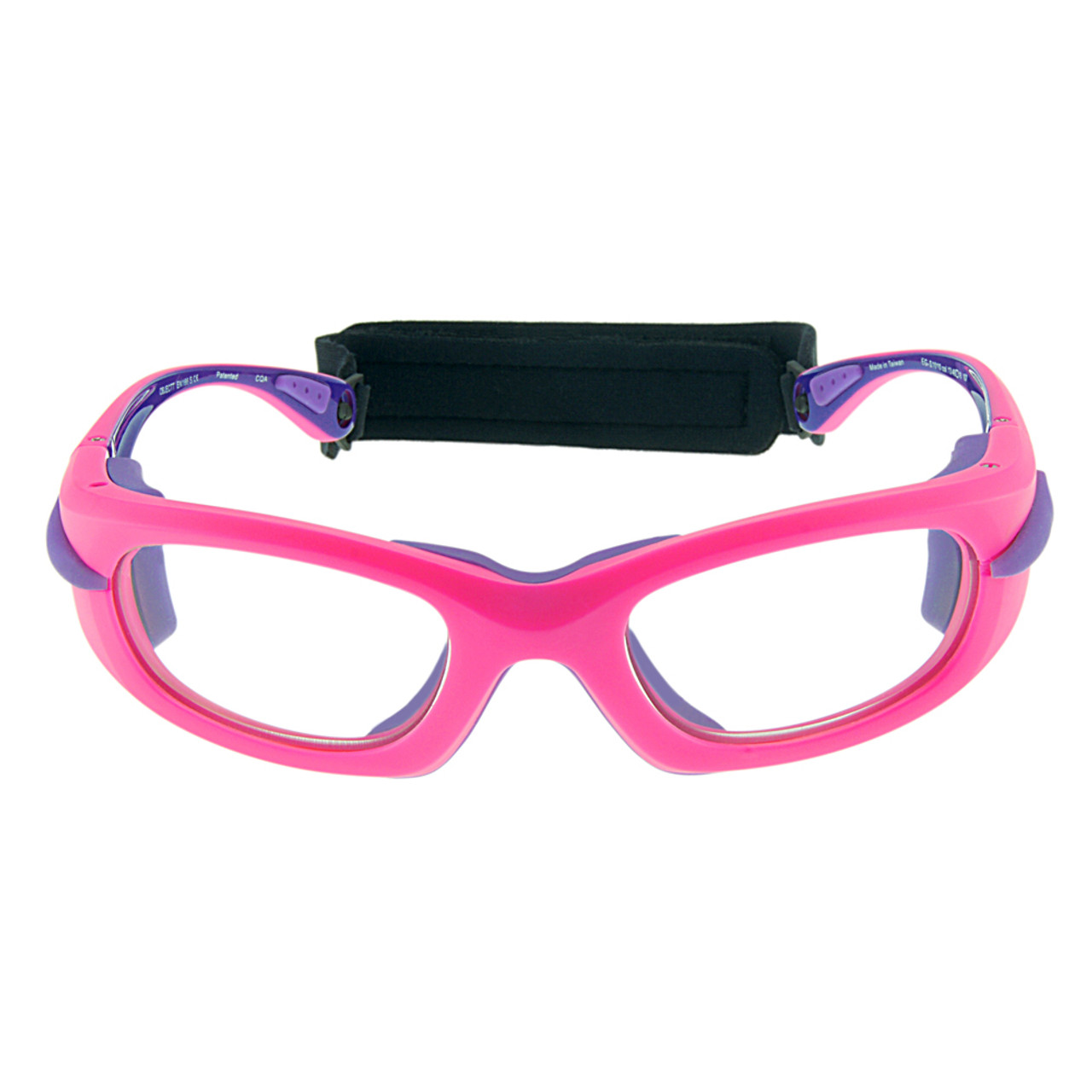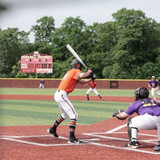How Should Sports Goggles Fit?
Wearing proper eyewear while playing sports is an excellent way to protect your face and eyes. But, having sports goggles that fit incorrectly can be just as dangerous as not wearing anything around your eyes. Before wearing your sports goggles for sporting activities, always ensure a snug and proper fit before going out on the field.
How Should Sports Goggles Fit?
Ensuring your prescription sports goggles fit correctly is essential if you play high-speed or contact sports. Having correctly fitted goggles can ensure that you can see accurately and your eyes and face remain protected. When fitting prescription sports goggles, ensure the strap, frame, nose piece, and face is fitted correctly.
- Strap - Ensure the strap or arms of the goggles fit correctly on the side of the face or around the head. The strap should be tight enough to prevent the glasses from moving if bumped or knocked gently. Conversely, the strap should not be so tight that it puts undue stress on the temples, leading to pain and headaches. The strap should lay flush along the skin near the temples. If you notice bowing around the temples where the strap makes an indentation, it's a good indication the strap is too tight.
- Frame - Ensure the frame of the sports goggles fit snugly around the face without movement. The frame should fit snuggly but never indent the orbital or cheekbones. Ensure the eyes are centered in the lens. You should be looking through the very center of the lens. Having a correct PD will help ensure a good fit.
- Nose - The nose piece on the sports goggles should fit snugly along the bridge of the nose, without any slipping or sliding. If the nose is loose, additional rubber nose pieces can be added to the goggles to create a better fit. Conversely, ensure the nose doesn't fit too snuggly, creating an indentation in the skin.
- Ears - If your sports goggles have arms instead of a strap, ensure the arms of the glasses fit snugly around the ears. You want the curve of the arm to fit snugly around the ear, securing the goggles around the face. If the earpiece is too loose, the arm may be too long or have an incorrect curve to fit with your ear. Sports goggles that are too loose run the risk of being knocked off with a ball or contact.
What Is a PD Measurement?
PD is an abbreviation for pupillary distance. This term is commonly used when fitting people with glasses or goggles. The PD measures the distance (in millimeters) between the center of one pupil to the other. The PD measurement is then communicated to the glasses manufacturer so the lens can be properly constructed and fitted to the frames. While most professionals will measure your PD for you, it is also possible to measure your own PD at home with a ruler.
It is always important to have the correct size PD measured exactly as possible. Even a tiny error could cause vision problems, such as distorted images. Distorted vision could lead to blurred vision, headaches, or even dizziness, becoming dangerous when playing sports.
Remember that the PD doesn't directly impact the overall size of the frame but rather the way lenses are shaped and fitted. Having lenses made to your exact PD can ensure you are looking through the fullest part of the lens, where the most accurate prescription is centered.
Special Considerations for Sports Goggles
Ensuring your prescription goggles or prescription glasses are the proper fit can help protect your face and help you see clearly without distortion. When fitting sports goggles for children, some special considerations apply.
Fitting sports goggles with "room to grow" for children is tempting, especially with how quickly children grow and how much a child's face shape can change. Allowing some room to fit in moderation is acceptable. Generally speaking, most sports goggles have some flexibility which allows for minor adjustments.
Remember that allowing a child to wear sports goggles too big is just as dangerous as allowing a child to wear sports goggles that fit too tightly and are too small. Not only will small frames hurt the face, but they could greatly limit peripheral vision, leading to possible accidents. Further, allowing a child to wear prescription sports glasses with a prescription that isn't strong enough could hinder performance and further distort vision.
Prescription Swim Goggles – Sports Goggles – Ski Goggles
Leader in Prescription Goggles and Glasses
Kids RX Swim Goggles – Adult RX Swim Goggles – Prescription Sports Goggles - RX Ski Goggles
Recommended Products
-
On Sale

Progear Kids Sports Glasses EG-S1010 TEMPLE - Shiny Metallic Blue 06 - SMALL Size 48
SG-19-S1010-20-48-K-Blue
US $72.95US $72.95 -

Rec Specs Liberty Sport Maxx 20 Baseball Glasses- Crimson- Size 51 (Prescription/Rx Lenses Available)
SG-19-Maxx-20-51-BB-K-11
US $149.95 -

Rec Specs Liberty Sport Maxx 20 Baseball Glasses- Black- Size 51 (Prescription/Rx Lenses Available)
SG-19-Maxx-20-51-BB-K-19/12
US $149.95 -

Rec Specs Liberty Sport F8 Slam Glasses - Shiny Black/Gray- Size 52 (Prescription/Rx Lenses Available)
SG-19-Slam-52-K-19/20
US $149.95

 Canadian Dollar (CAD)
Canadian Dollar (CAD)
 Euro (EUR)
Euro (EUR)
 British Pound (GBP)
British Pound (GBP)











